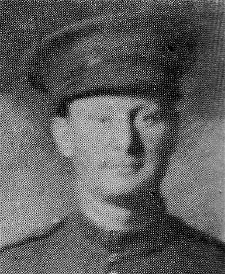|
Feb 8, 1890
|
Born in Ottawa, Ontario to William Henry and
Mercy Mary (nee Stevens) Paynter
|
|
Jan 17, 1910
|
Shown on the nominal roll of the Honour Guard of
the Governor General’s Foot Guard for the Opening of Parliament in Ottawa,
Ontario
|
|
Nov 6, 1914
|
Attested into the 21st Battalion in Kingston, Ontario
Ø Number 59782 (temporary number 799)
Ø Next of kin given as Mrs. L. Kenny, sister, 47 Duke St., Ottawa,
Ontario
Ø Previous occupation given as Clerk
o Later noted as Grocery Clerk
Ø No previous military experience given
Ø Religion given as Church of England
Ø Posted to “F” Company
o This was later reorganized into “C” Company
The 21st Battalion trained in the Kingston, Ontario
area through the winter of 1914-15.
|
|
May 6, 1915
|
Embarked the RMS Metagama in Montreal, Quebec

|
|
May 15, 1915
|
Disembarked in Devonport, England and the
battalion proceeded to the West Sandling Camp, near Hythe, Kent to continue training
|
|
Sep 14, 1915
|
Embarked the St. Seiriol in Folkestone
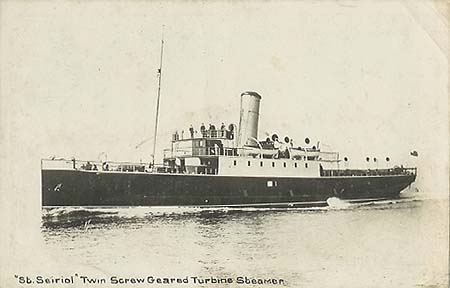
|
|
Sep 15, 1915
|
Disembarked in Boulogne, France and the battalion
proceeded to St. Omer
|
|
Nov 28, 1915
|
Sentenced to 5 days Field Punishment #2 and 15
hours extra fatigue duty for being drunk at 8 pm
|
|
Jan 6, 1916
|
Admitted to the No. 5 CFA (Canadian Field Ambulance) with a
diagnosis that reads Influenza. After
being assessed, he was moved to the Division Rest Station in Godewaersvelde,
France
|
|
Jan 16, 1916
|
Transferred to the NMCCS (North Midland Casualty
Clearing Station) at Mont des Cats, France and the diagnosis was changed to
read Debility
|
|
Jan 23, 1916
|
Transferred to the No. 12 Casualty Clearing
Station and the diagnosis was changed to read Laryngitis
|
|
Jan 29, 1916
|
Discharged to duty and rejoined the 21st
Battalion
|
|
Feb 29, 1916
|
Sentenced to 28 days Field Punishment No. 1 for
being absent from parade
|
|
Apr 17, 1916
|
Sentenced to 28 days Field Punishment No. 1 for
being absent from camp and for being drunk
|
|
Jun 4, 1916
|
Admitted to the No. 5 Canadian Field Ambulance
with a diagnosis that reads Dermatitis.
He was transferred the same day to the No. 4 Canadian Field Ambulance
|
|
Jun 19, 1916
|
Discharged to duty from the field ambulance
|
|
Jul 28, 1916
|
Sentenced to 14 days Field Punishment No. 1 and
forfeited 2 days pay for being absent from the trenches.
|
|
Sep 15, 1916
|
During the 21st Battalion’s capture of
the sugar factory south of Courcelette, France, Private Paynter received a
wound to his back and was evacuated to the No. 4 Canadian Field Ambulance for
first aid. He was transferred the same
day to the 2nd Division Rest Station to recover
|
|
Sep 19, 1916
|
Transferred to the British 1/3 Northern Field
Ambulance for assessment and then discharged to duty to rejoin the 21st
Battalion
|
|
Nov 17, 1916
|
Appointed to the rank of Lance Corporal
|
|
Dec 7, 1916
|
Granted 10 days leave
|
|
Dec 22, 1916
|
Rejoined the 21st Battalion resting in
Calonne, France from leave
|
|
Mar 29, 1917
|
Admitted to the No. 5 Canadian Field Ambulance
with a diagnosis that reads Myalgia to legs and arms
|
|
Mar 31, 1917
|
Transferred to the No. 6 Canadian Field Ambulance
and placed in the rest station to recuperate
|
|
Apr 4, 1917
|
Transferred to the No. 18 CCS (Casualty Clearing
Station)
|
|
Apr 5, 1917
|
Transferred via the No. 18 AT (Ambulance Train)
and admitted to the No. 7 Canadian General Hospital in Etaples, France and
the diagnosis was changed to read PUO (Pyrexia of Unknown Origin), a fever
without a known cause. This was often
referred to as Trench Fever
|
|
Apr 11, 1917
|
Transferred to the No. 6 Convalescent Depot in
Etaples
|
|
Apr 14, 1917
|
Transferred to the No. 5 Convalescent Depot in
Cayeux, France
|
|
Jun 13, 1917
|
Discharged from hospital care and reported to the
No. 2 CIBD (Canadian Infantry Base Depot) in Etaples
|
|
Jun 18, 1917
|
After leaving the base depot, William Paynter
rejoined the 21st Battalion resting in Coupigny, France
|
|
Jul 25, 1917
|
Appointed to the rank of Acting Corporal without
pay
|
|
Oct 1, 1917
|
Admitted to the No. 6 Casualty Clearing Station
with a diagnosis that reads Pneumonia and reported to be dangerously ill
|
|
Oct 10, 1917
|
Transferred via the No. 5 Ambulance Train and
admitted to the No. 11 USA General Hospital in Camiers, France
|
|
Oct 19, 1917
|
Invalided to England aboard the Hospital Ship
Stad Antwerpen

On arrival in England, he was admitted to the
Colchester Military General Hospital
Transferred to the EORD (Eastern Ontario
Regimental Depot) for pay purposes while in hospital
|
|
Oct 20, 1917
|
Transferred to the East Suffolk & Ipswich Hospital
in Ipswich
|
|
Nov 23, 1917
|
Transferred to the Canadian Convalescent Hospital
in Woodcote Park, Epsom
|
|
Dec 31, 1917
|
Transferred to the No. 4 Canadian General
Hospital in Basingstoke and Fibrosis of the Lung was added to the diagnosis
On admission he complained of soreness in his
chest, headaches and shortness of breath on slight exertion
|
|
May 7, 1918
|
Transferred to the Canadian Special Hospital in
Lenham
|
|
Jun 6, 1918
|
Invalided to Canada and embarked the Hospital
Ship Llandovery Castle in Halifax, Nova Scotia

|
|
Jun 16, 1918
|
Disembarked in Halifax, Nova Scotia and proceeded
to Toronto, Ontario where he was admitted to the Central Military
Convalescent Hospital
|
|
Jun 20, 1918
|
Granted 14 days leave
|
|
Jul 4, 1918
|
On completion of his leave, he was readmitted to
the Central Military Convalescent Hospital suffering from chest pain and
shortness of breath
|
|
Sep 4, 1918
|
Discharged from hospital and posted to the
Military District No. 2 Casualty Company in Toronto
|
|
Sep 19, 1918
|
Discharged from the CEF in Toronto, Ontario
Ø Rank on discharge Corporal
Ø Entitled to War Service Badge
Class “A”
Ø Proposed residence on
discharge 305 Gladstone Ave., Toronto, Ontario
|
|
Nov 5, 1918
|
Attested into the 3rd Battalion,
Canadian Garrison Regiment, CEF in Kingston, Ontario
Ø Number 59782
Ø Next of kin given as Mrs.
David Walker, sister, Gladstone, Ave., Ottawa, Ontario
Ø Previous occupation given as
Grocery Clerk
Ø Previous military experience
given as 2 years in the 23rd Battalion, 5 years in the Governor
General’s Foot Guard and 4 years in the CEF
Ø Previously discharged because
of Pneumonia, Bronchitis and DAH (Disordered Activity of the Heart)
Posted to Military District No. 3 CMPC (Canadian
Military Police Corps) in Kingston
|
|
Jan 28, 1919
|
Transferred to the No. 3 District Depot in
Kingston and posted to the Queen’s Military Hospital for duty
|
|
May 29, 1919
|
Admitted to the Queen’s University Military
Hospital with a diagnosis that reads Epistaxis, a nose bleed
|
|
Jul 2, 1919
|
Transferred to the Cobourg Military Hospital
|
|
Aug 7, 1919
|
Discharged from hospital care and transferred to
the CAMC (Canadian Army Medical Corps) and posted to the Cobourg, Ontario
Military Hospital for duty
|
|
Feb 7, 1920
|
Admitted to the Cobourg Military Hospital with a
diagnosis that reads la Grippe (Influenza)
|
|
Feb 11, 1920
|
Discharged to duty from hospital care
|
|
May 13, 1920
|
Discharged from the CEF in Cobourg, Ontario
Ø Rank on discharge Private
Ø Proposed residence on
discharge Elm St., Ottawa, Ontario
Following his discharge, the 1914-15 Star,
British War Medal and Victory Medals were sent to him at Elm St., Ottawa,
Ontario
|
|
Jan 4, 1921
|
Married to Emeline Boswell in Port Hope, Ontario
|
|
Sep 27, 1945
|
William Harry Paynter died at home, 57 Chapel St.
Cobourg, Ontario and was buried in the Union Cemetery in Cobourg. The cause of death was Chronic Degenerative
Myocarditis, brought on by Chronic Alcoholism and premature Senility. His death was ruled a result of his active
service during WW1.
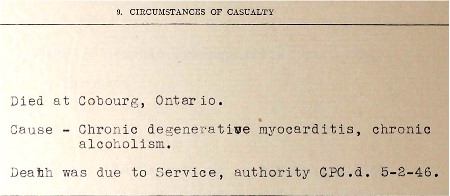
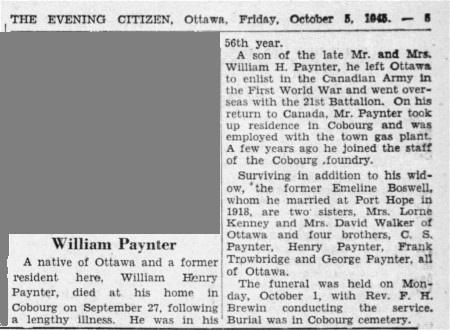
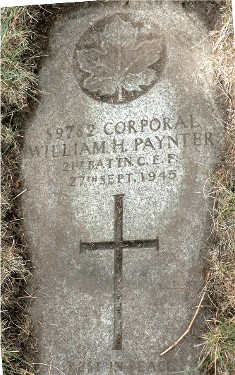
|
|
